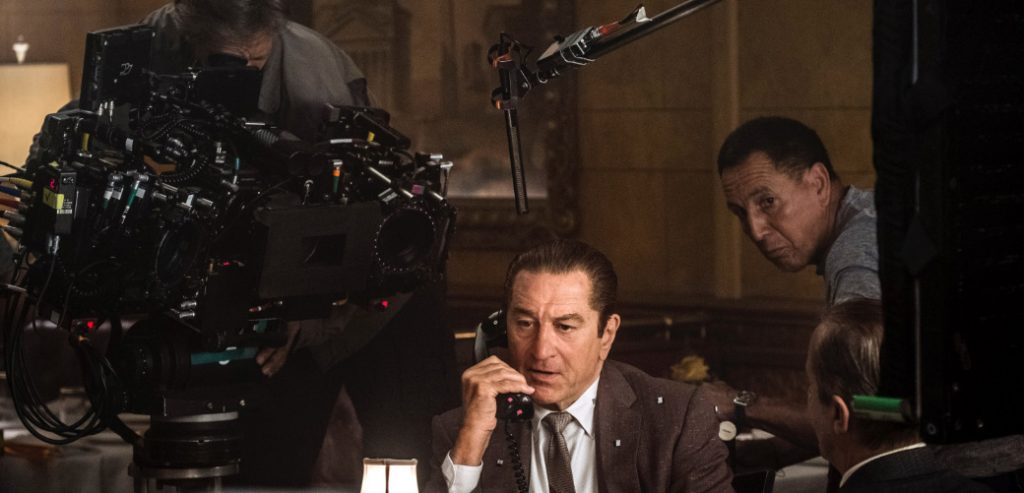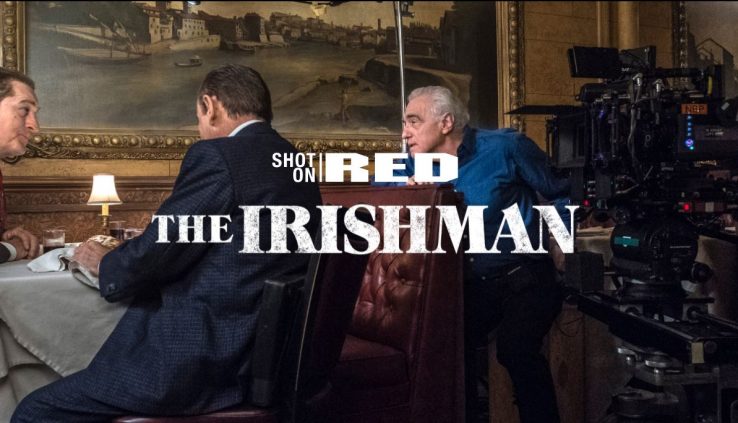Shot on RED: The Irishman
By Adam Noyes
One of the biggest films of last year was Martin Scorsese’s The Irishman, which was shot on RED Digital Cinema Cameras. RED Recently released a great article detailing the process. We’re going to take a look at the finer points of that article, below.

“We tried hard to tell the story from Sheeran’s perspective and to give the audience a feeling of their own memories and lives,” Prieto explains. “Having read the script and the book, it felt to me that representing the passage of time would be more appropriate for the texture of motion picture film negative. Scorsese referenced the patina of home movies, but he specifically didn’t want it to look like Super 8 or 16mm, so that started the whole process of researching how to achieve a feeling of memory.”
At the same time, Prieto began discussions with the picture’s VFX Supervisor, Pablo Helman of ILM, about the process of digitally de-aging actors including De Niro, Al Pacino and Joe Pesci.
The director’s brief was to find a way of photographing the actor’s performance without any of the conventional invasive motion capture techniques such as facial tracking markers, head-mounted cameras, or repeat performances in a controlled environment.
“The actors’ performance had to be captured on the set while they were interacting with each other and under the on-set lighting,” Prieto says.
Helman showed the director and his DP a proof of concept of ILM’s proposed solution in which a scene from Scorsese’s Goodfellas was re-enacted by 74-year old De Niro, de-aged to appear in his mid-40s.
“The concept worked extraordinarily well but required synchronizing the shutters of the main camera with two witness cameras,” Prieto explained. “Synching the shutter is really difficult to achieve with film negative, in addition to needing the witness cams to move in unison with the main camera. They needed to function as essentially the same camera head. Both impediments precluded shooting on film.”
The straightforward route would have been to shoot entirely on digital and add grain to achieve the desired look, but Prieto felt strongly that only negative would deliver the echoes of memory the story demanded.
“The whole last section of the story didn’t need any de-aging – the opposite in fact,” he says. “We were to use make-up and prosthetics to make the actors appear older. I knew I wanted to retain the characteristics of film and add extra grain to that section, and I didn’t think that could be achieved in post.”
Concluding that they would shoot digital for the VFX scenes and 35mm for the other half of the film, it became extremely important to ensure a seamless transition between the two.
“It couldn’t fall short,” he stresses. “There had to be continuity of texture.”

